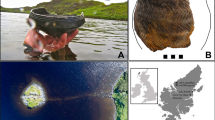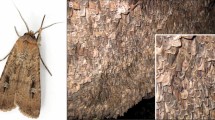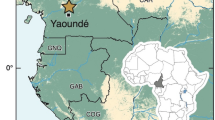A remarkable find allows the reconstruction of the earliest recorded preparation of noodles.
Abstract
Noodles have been a popular staple food in many parts of the world for at least 2,000 years1, although it is debatable whether the Chinese, the Italians or the Arabs invented them first. Here we analyse a prehistoric sample of noodles contained in a well preserved, sealed earthenware bowl discovered in the Late Neolithic2,3,4 archaeological site of Lajia in northwestern China. We identify millet as the source of the abundant seed-husk phytoliths and starch grains present in the vessel. This shows that the conversion of ground millet flour into dough that could be repeatedly stretched into long, thin strands for the preparation of boiled noodles was already established in this region 4,000 years ago.
This is a preview of subscription content, access via your institution
Access options
Subscribe to this journal
Receive 51 print issues and online access
$199.00 per year
only $3.90 per issue
Buy this article
- Purchase on Springer Link
- Instant access to full article PDF
Prices may be subject to local taxes which are calculated during checkout

Similar content being viewed by others
References
Hou, G. Adv. Food Nutr. Res. 43, 143–193 (2001).
Institute of Archaeology, Chinese Academy of Social Sciences & Qinghai Provincial Institute of Cultural Relics and Archaeology Archaeology 12, 12–25 (2002).
Yang, X. Y., Xia, Z. K. & Yi, M. L. Chinese Sci. Bull. 48, 1877–1881 (2003).
Institute of Archaeology Archaeology 12, 58–76 (2003).
Ball, T. B., Gardner, J. S. & Anderson, N. Am. J. Bot. 86, 1615–1623 (1999).
Pearsall, D. M. Paleoethnobotany: A Handbook of Procedures 2nd edn (Academic, San Diego, 2000).
Lu, H. Y. & Liu, K. B. Div. Distrib. 9, 73–87 (2003).
Piperno, D. R., Weiss, E., Holst, I. & Nadel, D. Nature 430, 670–673 (2004).
Fujita, S., Sugimoto, Y., Yamashita, Y. & Fuwa, H. Food Chem. 55, 209–213 (1996).
Shelach, G. J. World Prehist. 14, 363–413 (2000).
Institute of Archaeology, Chinese Academy of Social Sciences & Qinghai Provincial Institute of Cultural Relics and Archaeology Archaeol. Cult. Relics 2, 85–91 (2004).
Ren, S. N. Archaeology 1, 37–49 (1995).
Author information
Authors and Affiliations
Corresponding author
Ethics declarations
Competing interests
The authors declare no competing financial interests.
Supplementary information
Rights and permissions
About this article
Cite this article
Lu, H., Yang, X., Ye, M. et al. Millet noodles in Late Neolithic China. Nature 437, 967–968 (2005). https://doi.org/10.1038/437967a
Published:
Issue Date:
DOI: https://doi.org/10.1038/437967a
This article is cited by
-
Boosting the electron beam transmittance of field emission cathode using a self-charging gate
Nature Communications (2024)
-
Food, cooking and potteries in the Neolithic Mijiaya site, Guanzhong area, North China, revealed by multidisciplinary approach
Heritage Science (2023)
-
Diet communication on the early Silk Road in ancient China: multi-analytical analysis of food remains from the Changle Cemetery
Heritage Science (2022)
-
Phytoliths in spikelets of selected Oryzoideae species: new findings from in situ observation
Archaeological and Anthropological Sciences (2022)
-
Fifty years of Quaternary palynology in the Tibetan Plateau
Science China Earth Sciences (2021)
Comments
By submitting a comment you agree to abide by our Terms and Community Guidelines. If you find something abusive or that does not comply with our terms or guidelines please flag it as inappropriate.



